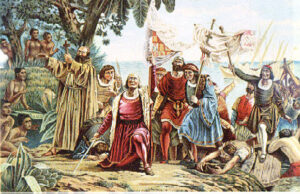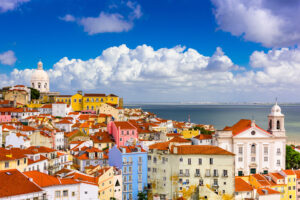The early history of Portugal is a fascinating picture of different cultures, invasions and changing societies that have shaped the country into what it is today. Because Portugal is located on the Iberian Peninsula, its history is closely linked to its neighbor Spain. But Portugal’s unique path has been shaped by different cultures and the country’s geography, making it an amazing story of survival and cultural fusion.
Ancient Origins and Pre-Roman Times
Portugal’s history begins in prehistory, with evidence of people living there during the Paleolithic period. Neolithic cultures lived in the area, and megalithic structures such as dolmens and monuments are scattered across the landscape, indicating that people lived there in the past.
The Celts were one of the first peoples to inhabit Portugal, appearing around 1000 BC. They founded several tribes, including the Lusitanians, who played an important role in the country’s early history. The Lusitanians were known for their fierce battles with people from other lands, especially the Romans. It was during this period that early social structures and unique cultural practices emerged.
Roman Takeover
The Romans began occupying the Iberian Peninsula in the 3rd century BC, but it took them hundreds of years to completely defeat the Lusitanians and other indigenous groups. By the 2nd century BC, much of what is now Portugal was under Roman rule. The Romans made Lusitania a province and Emerita Augusta (now Mérida, Spain) the capital.
During Roman rule, the area changed significantly. The Romans changed the way agriculture was produced, how cities were built, and how infrastructure worked. Cities such as Oricipo (now Lisbon), Bracara Augusta (now Braga), and Conimbriga thrived under Roman rule. Roman rule changed the culture, language, and architecture of the region in ways that cannot be erased. Many of these changes are still visible today.
German and Visigothic invasion
In the fifth century AD, the Roman Empire fell apart and entered a period of instability. The Soviets and Visigoths were two Germanic tribes who came to the area. The Suebi established a kingdom in the northwest of the Iberian Peninsula. Brakara Augusta was their capital. It was during this period that Roman and Germanic traditions merged to create a unique social and cultural landscape.
In the sixth century AD, the Visigoths, who already had a kingdom in Spain, crossed the border into Portugal and made the region part of their kingdom. During the Visigothic period, Christianity became more powerful, laws were established, and Roman, Celtic, and Germanic influences continued to mix.
Moorish invasion
The Moors, Muslim invaders from North Africa, arrived in Portugal in the early 20th century and caused many changes. In 711 AD, the Moors crossed the Strait of Gibraltar and quickly invaded the Iberian Peninsula. By 718 AD, they controlled much of what is now Portugal.
The Moorish era, which lasted for hundreds of years, had a huge impact on Portuguese architecture, culture, and agriculture. The Moors brought new crops, advanced irrigation methods, and architectural styles that are still visible in the southern regions of the country. Cities such as Faro and Silves became important places for learning and practicing Islam.
Christian Reconquest
The Christian Reconquista, also known as the Reconquista, was a long-term attempt by the Christian kingdoms of the Iberian Peninsula to reclaim lands held by the Moors. This process began in the early 20th century and continued throughout the centuries. The Portuguese Reconquista saw many wars, alliances, and minor territorial gains.
After a major victory over the Moors at the Battle of Uric in 1139, Alfonso Henriquez proclaimed himself King of Portugal. This is one of the most important events in Portuguese history. This event is considered the beginning of the Kingdom of Portugal. The Treaty of Zamora, signed in 1143, established Portugal as an independent kingdom from the Kingdom of Leon.
How the Kingdom of Portugal Was Formed
Over the next few hundred years, military campaigns and diplomatic efforts helped the Kingdom of Portugal become even more powerful. King Alfonso I, also known as Alfonso Henriquez, continued to expand the kingdom’s lands by conquering important cities such as Santarém and Lisbon. His successors, such as King Sancho I and King Alfonso II, kept this country a sense of national identity and unity. Building of churches and monasteries, the growth of towns and cities, and the improvement of trade routes all helped the country get rich.
During this time, the Portuguese language started to take shape. It comes from Latin and has been shaped by many linguistic and cultural exchanges. In the 1300s, some important works of literature were also written, such as the epic poem “Afonso Henriques” by Paio Soares de Taveirós.
During the Age of Discovery
It was Portugal’s early history that set the stage for its most famous time, the Age of Discoveries. In the late 1400s and early 1500s, the groundwork was laid for this time of exploration and growth. Explorers from Portugal, led by Prince Henry the Navigator, set out on trips that would change the course of history.
Portuguese sailors explored the coast of Africa, finding new lands and setting up trade routes. In 1419 and 1427, the Madeira Islands and the Azores were found by Portugal. This was the start of their maritime empire. Vasco da Gama’s historic trip to India in 1498, which opened up a sea route to Asia and made Portugal a world maritime power, was the result of this time of exploration.
Conclusion
The early history of Portugal is very interesting and full of different events. It includes prehistoric cultures, Roman rule, Germanic invasions, Moorish rule, and the Christian Reconquest. The country’s culture, society, and government were all changed forever by each of these times. It was in the 12th century that the Portuguese Kingdom was founded and then strengthened. This led to Portugal’s golden age of exploration and maritime dominance in the 15th and 16th centuries.



